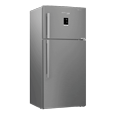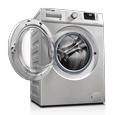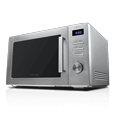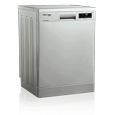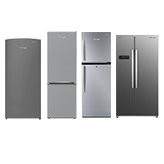

Our Blog
Everything you need to know
about our products & more
Subscribe
What's the Ideal Fridge Temperature to Keep Food Fresh and Healthy

Refrigerator represents contemporary food preservation technology and is an indispensable part of our daily lives. It is rapidly gaining popularity in both urban and rural households in India. It's our trusty food storage companion, ensuring our meals stay fresh and safe for consumption. However, have you ever wondered about the impact of the temperature you set in your fridge? The ideal fridge temperature plays a crucial role in preserving the quality and safety of your food.
By preventing the uncontrolled growth of bacteria, it ensures edibles remain safe for consumption over a span of days to weeks. Similarly, freezers play their role in maintaining food quality and stopping food contamination due to bacteria for long periods.
Further, let's explore the factors influencing ideal fridge temperature and how to maintain it. Before that, let's identify the ideal fridge temperature.
Ideal Fridge and Freezer Temperature
The ideal fridge temperature is often considered to be around 3°C to 5°C (37.4°F to 41°F). This temperature range strikes a balance between preventing bacterial growth and preserving the freshness of your food. At lower temperatures, bacteria tend to multiply at a slower rate, reducing the risk of foodborne illnesses.
The temperature of the freezer is usually between -18°C to -23°C (-0.4°F to -9.4°F), ensuring frozen foods stay solid and safe from bacterial growth. On the other hand, the fridge compartment operates at higher temperatures to keep your perishable foods at their optimal conditions.
Factors Influencing the Fridge Temperatures
Several factors can influence your set fridge temperature. These include the type of refrigerator you have, be it a double-door fridge, side-by-side refrigerator, or single-door refrigerator. The ambient temperature and the frequency of door openings also affect the fridge temperature control systems.
For instance, the external temperature can impact your fridge's cooling efficiency during the scorching summer months. Adjusting your fridge temperature slightly lower to compensate for the warmer surroundings is advisable. On the other hand, in colder months, you can raise the fridge temperature a bit to maintain optimal conditions without overcooling.
Maintaining the Ideal Fridge Temperature
If you notice your fridge is fluctuating from the ideal temperature mark or your freezer is not as frosty as you would prefer, do not worry. Here are a few ways in which you can retain the ideal fridge temperature:
Cooling Before Refrigeration
Steaming hot soups or freshly roasted chicken dishes might be comfort food for you, but they're a heat wave for your fridge or freezer. These culinary treats can mess with the fridge temperature control and create a breeding ground for bacteria. Before putting your comfort food in your refrigerator, allow it to cool down. However, do not cool up to room temperature, as that takes too long. Then cover them up and refrigerate.
Inspect the Door Seals
Monitor rubbery gaskets hugging the edges of your fridge door. They ensure insulation by keeping the cold where it belongs and blocking the warm from barging in. If one of them leaks, the cold air could slip out, making your fridge work extra hard, resulting in higher electricity bills.
Avoid Opening the Door Frequently
We all love to open the refrigerator and search for the next snack. But every time you swing open that fridge door, you allow warm air to enter the fridge, which can disrupt the inside temperature. Next time you seek sustenance, grab what you need and close the door quickly.
Ensure your Refrigerator is Well-Stocked
Ensuring your fridge and freezer are packed to the brim is a clever strategy to maintain the ideal fridge temperature. When these spaces are well-stocked, they can maintain cooler temperatures more effectively. Aim to keep around 20 percent of space free to avoid a cooling problem. So, whether it's shelves of groceries or compartments of ice, a well-stocked setup helps maintain the right temperature.
The ideal fridge temperature ensures that your meals remain fresh and your family stays healthy. The range of 3°C to 5°C strikes the perfect balance between preventing bacterial growth and maintaining the quality of your perishables. By understanding the science behind normal fridge temperature and following the right steps to support it, you can maximise the lifespan of your groceries and minimise food waste. Remember, a well-maintained fridge keeps your food fresher and contributes to a healthier lifestyle.
Tag Cloud
Subscribe
Popular Blogs
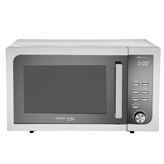 What is a Grill Microwave Oven & How to Choose One? | Voltas Beko
What is a Grill Microwave Oven & How to Choose One? | Voltas Beko
What is a grill microwave oven?
If you ever shopped for a microwave online or at the store, no doubt you may have come across several types of microwaves. A microwave
Read More... How do I choose a dishwasher?
How do I choose a dishwasher?
Having an empty basin was a myth until the invention of the dishwasher. We understand what a hassle it is to wash the dishes and crockery, and if you have
Read More... Smart Ways To Maximize Your Fridge Space
Smart Ways To Maximize Your Fridge Space
To remove things from and to place things in a messy refrigerator can be a headache. Therefore, it is better to organize and compartmentalize food items. Maybe you have extra
Read More...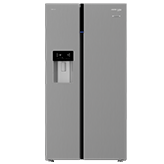 Interesting Facts About Side by Side Refrigerator
Interesting Facts About Side by Side Refrigerator
When shopping for a refrigerator, you have a choice between a single door and a side by side double door fridge. How often have you brought a month’s worth of
Read More...Recent Blogs
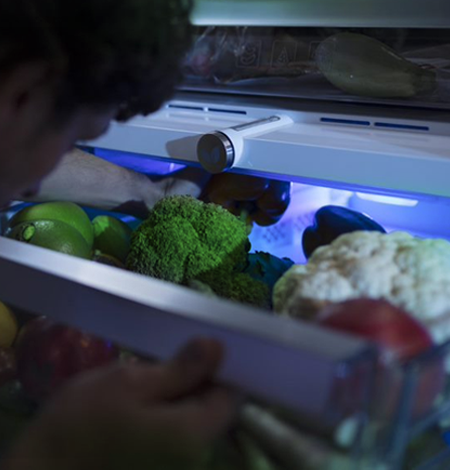 Organise Your Fridge: Best Guide to Manage Storage Inside - Know How
Organise Your Fridge: Best Guide to Manage Storage Inside - Know How
Have you ever had trouble finding that hunk of cheddar cheese you could swear you had in your fridge? Or have you ever made a trip to the grocery store
Read More...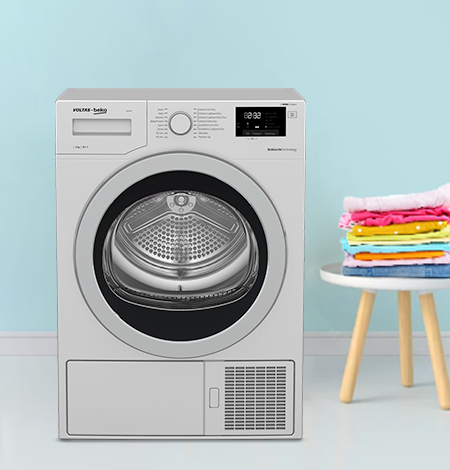 Can You Wash & Dry Shoes in Washing Machine - How to Guide
Can You Wash & Dry Shoes in Washing Machine - How to Guide
Clean and well-maintained shoes reveal much about an individual’s character, values, habits, and overall lifestyle. They can help create a good first impression. However, manually washing shoes requires a lot
Read More...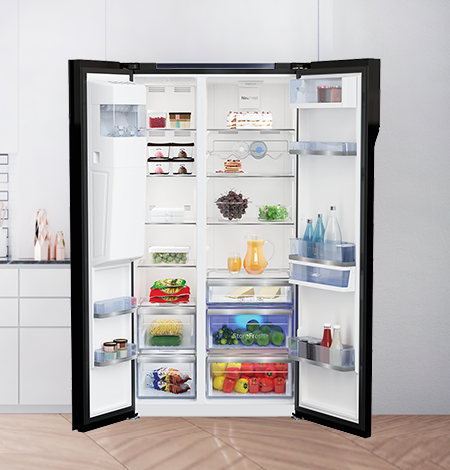 NeoFrost™ Dual Cooling Fridge by Voltas Beko - What Advantage Does That Serve?
NeoFrost™ Dual Cooling Fridge by Voltas Beko - What Advantage Does That Serve?
Imagine you’re hosting a party at your house and have invited your friends over. You ask them to grab some cold drinks from the refrigerator. However, the moment they open
Read More...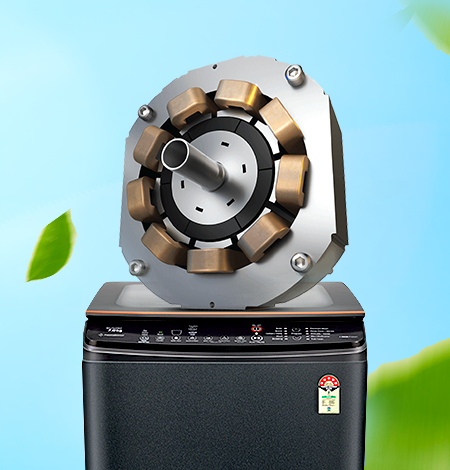 Energy Efficient Washing Machine by Voltas Beko Can Cut Electricity Bill Easily
Energy Efficient Washing Machine by Voltas Beko Can Cut Electricity Bill Easily
Have you ever looked at your electricity bill and wondered how it got so high? With the increasing living costs, it is important to take every necessary step to cut
Read More...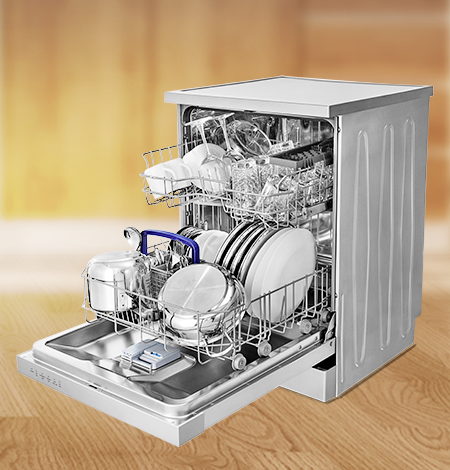 5 Reasons Why You Should Buy a Voltas Beko Full-Size Dishwasher
5 Reasons Why You Should Buy a Voltas Beko Full-Size Dishwasher
Dirty utensils in the sink are always displeasing. They not only look repulsive but also remind you of the impending task of washing them. If not cleaned on time, the
Read More...


